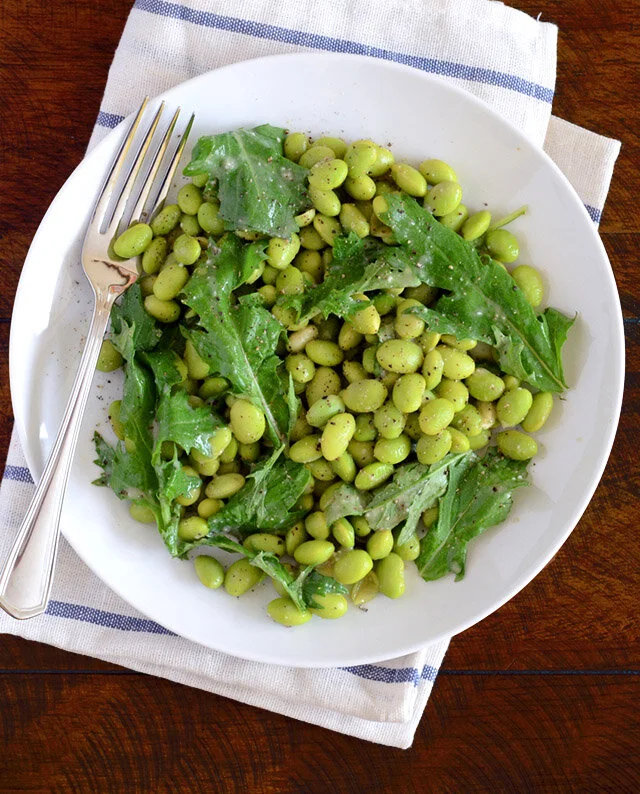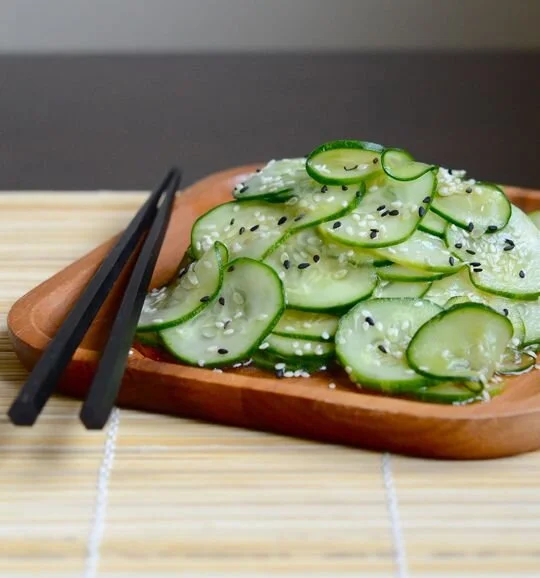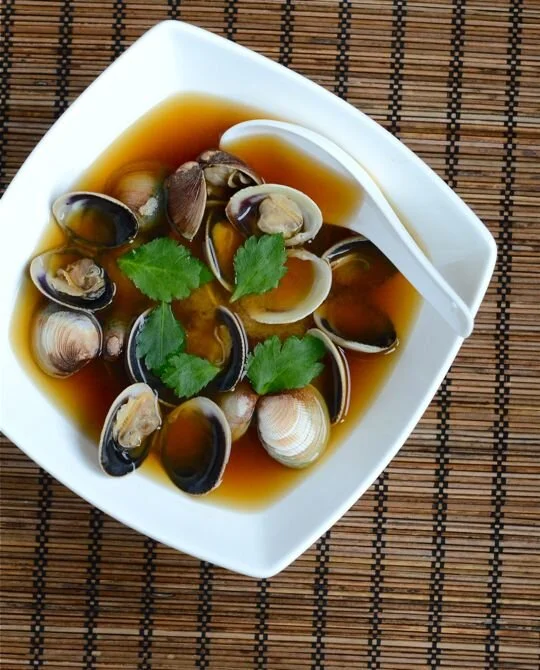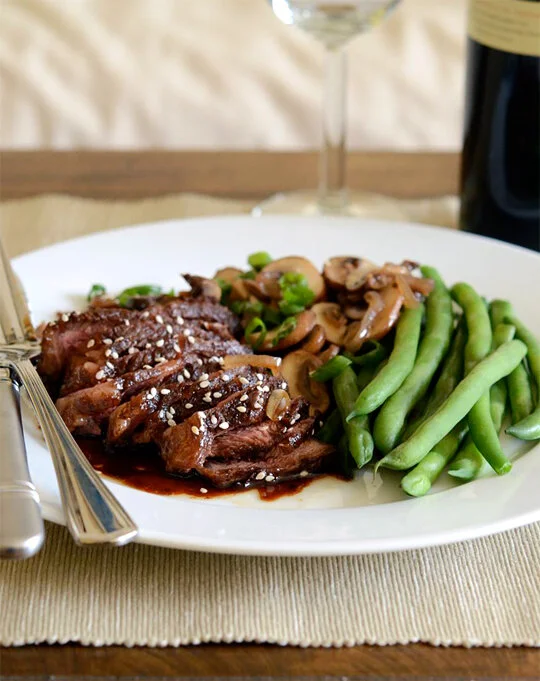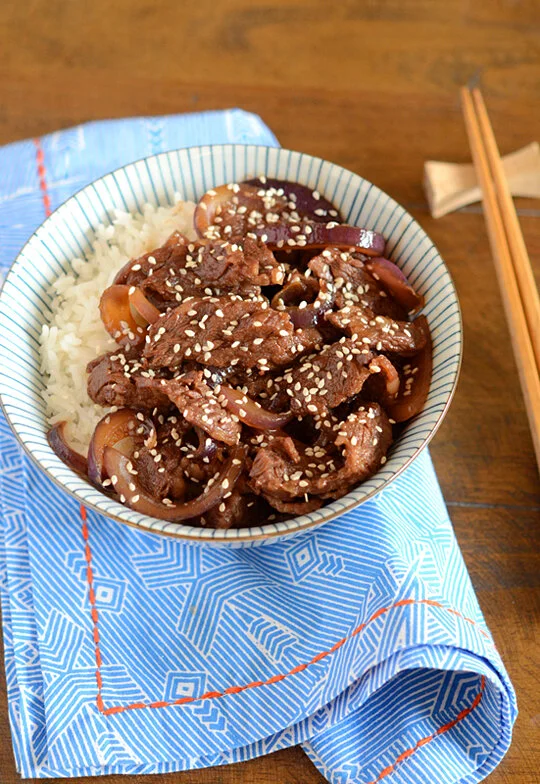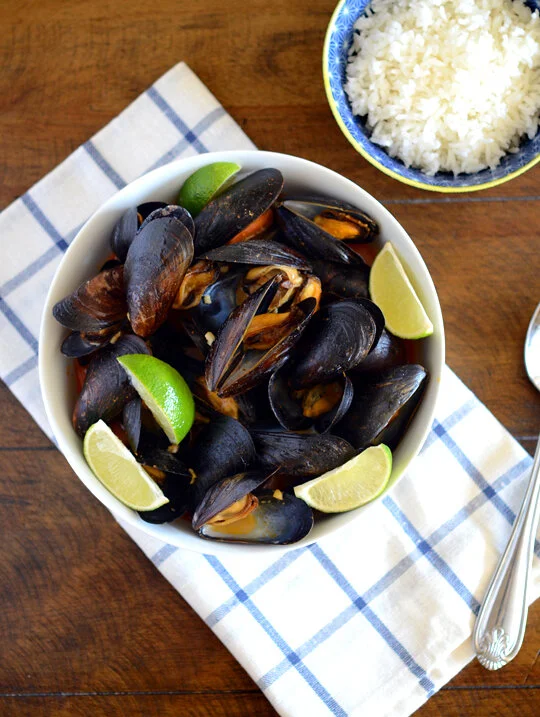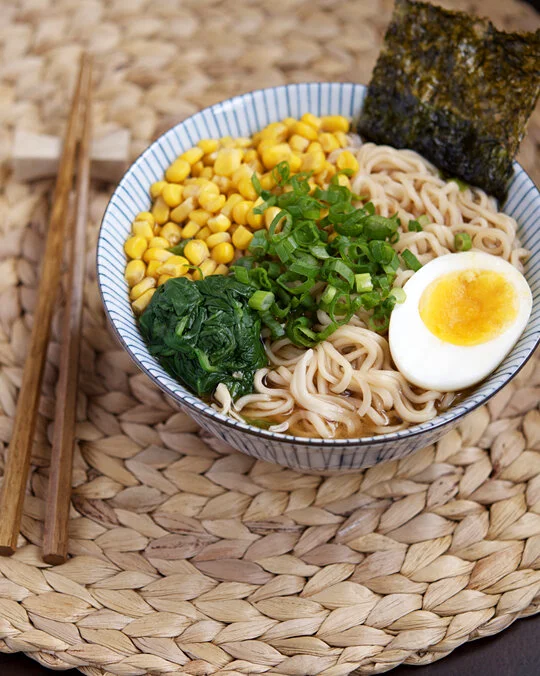Mapo tofu ramen is a hybrid dish that has become a big part of Japan’s ramen culture.
Read MoreIt's supposed to be an appetizer, but I've been eating double or triple the portions as a full-on meal.
Read MoreWhenever I need a quick appetizer or side to go with an Asian main course, I turn to cucumbers.
Read MoreInstead of using dashi, the soup gets its flavor from the natural brininess of the clams and their juices, which, combined with sake, form the base.
Read MoreThere has been a lot baking around here for the past two weeks. And a lot of cookies laying around for consumption.
While it's always good to have cookies around your kitchen, the reason for all this baking has to do with an exciting new project — a Cookies from Around the World kit I'm developing with my friends at GrubKit. We're launching the kit soon, and it's going to feature ingredients to bake cookies from four countries around the world, both from traditional recipes and with inventive modern takes. It's like a world tour via dessert.
The recipe I'm developing is a Japanese green tea shortbread cookie. While shortbread is traditionally Scottish, in recent decades green tea-flavored shortbread cookies have become pretty widespread around Japan, sold in bakeries and pastry shops alongside green tea cakes and mousses. And it's quite an addictive little snack.
Read MoreA good teriyaki dish, whether it's steak, chicken, or salmon, relies on just a few ingredients to create the deep, complex flavor.
Read MoreGyudon (Japanese Beef and Rice Bowl ) is pure comfort food for me. The ingredients are simple but result in the sauce that’s sublime.
Read MoreThis recipes calls for smaller clams such as Manila clams and other cockles. The dish easy to make and packed with tangy, spicy, and briny flavors.
Read MoreThis quick and easy vegetarian miso ramen is perfect when you have just 25 minutes.
Read MoreSince we're now officially deep into winter, I'd like to re-share a recipe for Japanese pork belly, or buta no kakuni. Really, there are few things that are better on a cold day than a bubbling pot of braised pork belly and its aroma of of ginger, scallions, star anise, and sweetened soy sauce altogether. And because we're still in the midst of the holiday season, you have an excuse to indulge. Here is a revised version of the recipe, first published in April 2010.
At a dinner party earlier this week, a nutritionist from China told me point-blank the main problem with American diets is the overwhelming meat consumption. Meat was a bigger culprit than carbs or complex sugars, he said. Americans think nothing of eating a 22 oz. steak or a bucket of fried chicken in a single meal, with potato as a "vegetable" side. There's not moderation in this country, and that's why obesity is such a huge problem. I nodded and agreed, mentioning, among other things, the now notorious Double Down.
The next night, without thinking, I made a pound of pork belly for dinner.
Read MoreRemember my last post, when I talked about fried eggs with oyster sauce over rice, the best umami-laden breakfast that takes almost no time to make? Well, I forgot to mention an even quicker one - a fried egg topped with furikake. Or for that matter, plain rice topped with furikake.
Furikake, if you're not familiar with it, is an amazing Japanese seasoning that's made up of dried seaweed flakes, sesame seeds, sugar, and salt. Sometimes there's also bonito flakes, chili flakes, dried salmon, miso powder, or egg powder, depending on the brand and its varieties. It's like having all the flavors of the sea (and then some) in one convenient little glass jar.
So it goes without saying that furikake is also great over fried rice. Yesterday, to take a break from all the recipes I've been fine-tuning for my cookbook, I made a variation of my standard fried rice with edamame instead of green peas. Doing so made me wonder why I don't always make fried rice with edamame. Don't get me wrong. Regular ol' peas are great, but edamame somehow felt more substantial, and I didn't feel the need to add anything else for flavoring except scallions, eggs, and salt and pepper.
Read MoreIt took a trip to Japan to realize I've been making edamame wrong all these years.
Well, not necessarily wrong wrong. But not the best way possible.
When I discovered the joys of edamame about 10 or 12 years ago, I would buy bags of the frozen stuff, microwave them, and sprinkle table salt on top. Then I progressed to boiling them in a pot. When I discovered fresh edamame in Chinatown, and replaced Morton with Malden, I thought this was as good as edamame could get. After all, it tasted the same as at all the Japanese restaurants in the US.
Then I went to Japan. In Tokyo this past summer, I noticed something slightly different about the fuzzy little legume that was as good an accompaniment with omikase-style sushi as it was with beer at 2 a.m. My meals of tempura, sashimi, fugu, and yes, even fugu sashimi were all bookended by a dish of edamame that tasted, well, better. Was it just because my subconscious dictated that the Japanese food had to taste better in Japan?
Read More

